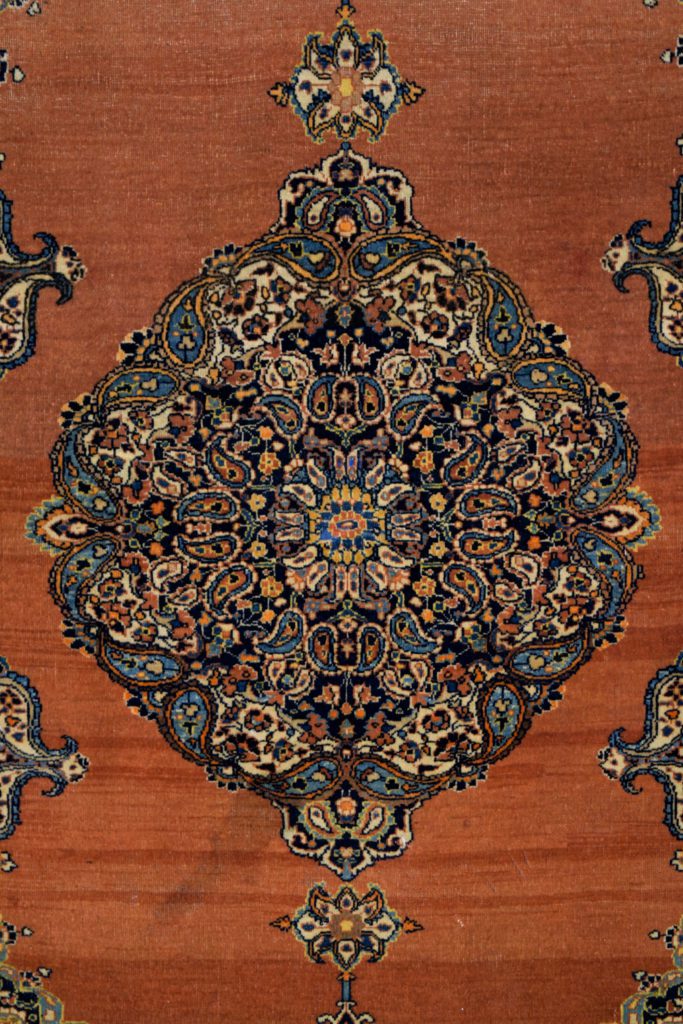A Brief History – Haji Jalili Carpets
Renowned for their divine design and quality, Haji Jalili carpets are among the most sought-after Persian antiques. Why are they so special? What about these carpets makes them superior to carpets made in neighboring areas, such as Tabriz or Kashan? Continue reading this week’s A Brief History to unravel their history and what distinguishes them from other Persian carpets.
To begin, unlike other styles of Persian carpets that are named for their place of origin, Haji Jalili carpets are named for the Master-weaver who created them. Born in the village of Marand, a small town outside of Tabriz, Haji Jalili was revered for the distinctly colorful and intricate pieces crafted in his workshop. Drawing on inspiration from traditional Persian carpet themes, such as the classic garden or Mihrab design, Haji Jalili wove his unique twist into each carpet.
There are two main differences between Haji Jalili pieces and other Persian carpets. These differences are their distinct color palette and their exceptional construction. Using the finest wool available in conjunction with innovative color combinations, the rugs woven from Haji Jalili’s workshop were among the most exquisite carpets of the late 19th century. Their signature colors, including rose, gold, copper, cream, and gray, are unique among traditional rugs. Especially within their utilization as well as in their proportions. A testament to their incredibly fine yet durable constriction, several of these carpets are still in existence. While many are housed in museums and private collections, even Haji Jalili carpets that have seen everyday use across centuries possess steadfast beauty. Many would go so far as to argue that the natural fading and wearing of these pieces further add to their regal aesthetic. Many new productions will boast the “Haj Jalili” name, reproducing his designs and even using chemical processes to mimic the natural aging. As you can imagine, however, the quality and intrinsic beauty of original Haji Jalil pieces remain unparalleled in the carpet world.
Consisting of a copper-orange background and a large central medallion, this Haji Jalili carpet circa 1890 measures 4’4″ x 6′. Organic vegetable dyes provide dramatic soft blues, indigos, cream, and beige tones. The overall design depicts a lush garden teeming with life. Amid the copper-orange background, a large central medallion consisting of interconnected paisley and flower motifs lends symmetry and serenity to the design. The exterior design showcases a multi-level border consisting of orange vines and blue cream flowers, encapsulating the open interior field.

When one understands that each Haji Jalili carpet is crafted entirely by hand, one begins to unravel each carpet’s complexity and inner beauty. If you enjoyed this antique Haji Jalili carpet, check out more of Orley Shabahang’s Antique collection on our website or at our digital showroom via 1stdibs.com!



